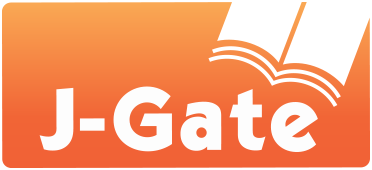Effects of Blended English Learning in Superior Education: A Case Study
DOI:
https://doi.org/10.54855/acoj.221356Keywords:
Virtual Classes, Blended Learning, Difference-in-DifferenceAbstract
Learning English, not as a native language, has fostered the application of tools and methods in the teaching-learning process. The combination of virtual classes and face-to-face learning is looked at as a new procedure with students at superior undergraduate institutions of Loja. The purpose of the study focuses on showing how Blended learning benefits learners more than Virtual lessons only by implementing ICT resources for teaching, and its effect is significant in quantitative analysis. This study uses a quasi-experimental method of Difference-in-Difference estimation to compare the grades of 296 students. Additionally, this study uses an observation checklist and a teacher's questionnaire to get the qualitative revision. The study's outcomes focus on showing how Blended Learning benefits learners compared to virtual lessons, especially in class participation. To conclude, the authors mentioned how the interaction of students with facilitators and peers helps students to engage with better results. However, there is a necessity for changes in institutional conditions to have real innovative progress in education.
References
Anthony, B., Kamaludin, A., Romli, A. et al. Exploring the role of blended learning for teaching and learning effectiveness in institutions of higher learning: An empirical investigation. Educ Inf Technol 24, 3433–3466 (2019). https://doi.org/10.1007/s10639-019-09941-z
Athey, S., & Imbens, G. W. (2006). Identification and inference in nonlinear difference‐in‐differences models. Econometrica, 74(2), 431-497. https://doi.org/10.1111/j.1468-0262.2006.00668.x
Ali, W., & Kaur, M. (2020). Mediating educational challenges amidst Covid-19 pandemic. Asia Pacific Institute of Advanced Research (APJCECT), 6(2), 40-57.
Almonacid-Fierro, A., Vargas-Vitoria, R., De Carvalho, R. S., & Fierro, M. A. (2021). Impact on Teaching in Times of COVID-19 Pandemic: A Qualitative Study. International Journal of Evaluation and Research in Education, 10(2), 432-440.
Aydin, S. (2013). Teachers' perceptions about the use of computers in EFL teaching and learning: The case of Turkey. Computer Assisted Language Learning, 26(3), 214-233. https://doi.org/10.1080/09588221.2012.654495
Azizan, F. (2010). Blended learning in higher education institutions in Malaysia. Proceedings of Regional Conference on Knowledge Integration, (10), 454-466.
Bennett, L. (2014) 'Learning from the early adopters: developing the digital practitioner', Research in Learning Technology, vol. 22, 21453, DOI: http://dx.doi.org/10.3402/rlt.v22. 21453
Bonk, C. J., & Graham, C. R. (2012). The handbook of blended learning: Global perspectives, local designs. John Wiley & Sons.
Bryan, A., & Volchenkova, K. N. (2016). Blended learning: definition, models, implications for higher education. Вестник Южно-Уральского государственного университета. Серия: Образование. Педагогические науки, 8(2), 24-30.
Buran, A., & Evseeva, A. (2015). Prospects of Blended Learning implementation at Technical University. Social and Behavioral Sciences, 206, 177-182. https://doi: 10.1016/j.sbspro.2015.10.049
Coman, C., Țîru, L. G., Meseșan-Schmitz, L., Stanciu, C., & Bularca, M. C. (2020). Online teaching and learning in higher education during the coronavirus pandemic: students' perspective. Sustainability, 12(24), 10367. https://doi.org/10.3390/su122410367
Dennis, N. K. (2013). Integration of a blended e-learning application for teaching English at a local university in Thailand. AsiaCALL Online Journal, 7(1).
Erdem, A. (2015). A research on reading habits of university students: Sample of Ankara University and Erciyes University. Procedia-Social and Behavioral Sciences, 174, 3983- 3990. https://www.sciencedirect.com/science/article/pii/S1877042815012045
Garrison, D. R., & Vaughan, N. D. (2008). Blended learning in higher education: Framework, principles, and guidelines. John Wiley & Sons.
Graham, C. R. (2006). The handbook of blended learning: Global perspectives, Local Designs. Pfeiffer Publishing.
Holiver, N., Kurbatova, T., & Bondar, I. (2020). Blended learning for sustainable education: Moodle-based English for specific purposes teaching at Kryvyi Rih National University. 10.1051/e3sconf/202016610006
Iglesias-Pradas, S., Hernández-García, Á., Chaparro-Peláez, J., & Prieto, J. L. (2021). Emergency remote teaching and students' academic performance in higher education during the COVID-19 pandemic: A case study. Computers in Human Behavior, 119, 106713.
Fisher, T., Denning, T., Higgins, C., & Loveless, A. (2012). Teachers' knowing how to use technology: exploring a conceptual framework for purposeful learning activity. Curriculum Journal, 23(3), 307-325.
Fleischmann, K. (2020). Online design education: Searching for a middle ground. Arts and Humanities in Higher Education, 19(1), 36-57.
Fleischmann, K. (2021). Hands-on versus virtual: Reshaping the design classroom with blended learning. Arts and Humanities in Higher Education, 20(1), 87-112.
Francis, R., & Shannon, S. J. (2013). Engaging with blended learning to improve students' learning outcomes. European Journal of Engineering Education, 38(4), 359-369.
Juhary, J. (2019). Perceptions of students: Blended learning for IR4. 0. International Journal of Information and Education Technology, 9(12), 887-892.
Karanezi, X., & Rapti, E. (2015) Teachers' attitudes and perceptions: Association of teachers' attitudes toward traditional and modern teaching methodology according to RWCT as well as teachers' perceptions for teaching as profession. Creative Education, 6, 623-630. https://doi: 10.4236/ce.2015.66061
Miyashita, H. (2021). Successive Action Research to Develop the Higher Order Thinking of EFL Learners Through Discussion Forums. AsiaCALL Online Journal, 12(5), 77-99.
Ministerio de Educación (2014). Acuerdo ministerial 052-14. Retrieved from: https://educacion.gob.ec/wpcontent/uploads/downloads/2014/03/ACUERDO-052- 14.pdf
Mirriahi, N., Alonzo, D., & Fox, B. (2015). A blended learning framework for curriculum design and professional development. Research in Learning Technology, 23.
Mishra, L., Gupta, T., & Shree, A. (2020). Online teaching-learning in higher education during lockdown period of COVID-19 pandemic. International Journal of Educational Research Open, 1, 100012.
Moskal, P., Dziuban, C., & Hartman, J. (2013). Blended learning: A dangerous idea?. The Internet and Higher Education, 18, 15-23.
Nazarenko, A. L. (2015). Blended learning vs traditional learning: What works? (a case study research). Procedia-Social and Behavioral Sciences, 200, 77-82.
Nguyen, T. T. A. (2022). Online education at Saigon University during the COVID-19 pandemic: A survey on non-English major college students' attitudes towards learning English. AsiaCALL Online Journal, 13(2), 1-20.
Picciano, A.G., Dziuban, C.D., & Graham, C.R. (Eds.). (2013). Blended Learning: Research Perspectives, Volume 2 (1st ed.). Routledge. https://doi.org/10.4324/9781315880310
Rahman, A. M. A., Azmi, M. N. L., & Hassan, I. (2020). Improvement of English Writing Skills through Blended Learning among University Students in Malaysia. Universal Journal of Educational Research, 8(12A), 7694-7701.
Senffner, D., & Kepler, L. G. (2015). Blended learning that works. American Society for Training and Development.
Siew-Eng, L., & Muuk, M. (2015). Blended learning in teaching secondary schools' English: A preparation for tertiary science Education in Malaysia. Procedia-Social and Behavioral Sciences, 167, 293-300.
Singh, H. (2003). Building effective blended learning programs. Educational Technology, 43(6) 51-54.
Solano, L., Cabrera, P., Ulehlova, E., & Espinoza, V. (2017). Exploring the use of Educational Technology in EFL teaching: A case study of primary education in the south region of Ecuador. Teaching English with Technology, 17(2), 77-86.
Suleri, J. I., & Suleri, A. J. (2019). Comparing virtual learning, classical classroom learning and blended learning. European Journal of Sustainable Development Research, 3(1), 1-8.
Valiathan, P. (2002). Blended learning models. Learning circuits, 3(8), 50-59.
Vasbieva, D., Klimova, I., Agibaloca, E., Karzhanova, N., & Bírova, J. (2016). Enhancement of students' Vocabulary learning through a blended learning approach. International Electronic Journal of Mathematics Education, 11(5) 1195-1203.
Wooldridge, J. (2007). What's new in econometrics? Lecture 10 difference-in-differences estimation. NBER Summer Institute.
Tayebinik, M., & Puteh, M. (2013). Blended Learning or E-learning?. arXiv preprint arXiv:1306.4085.
Downloads
Published
How to Cite
Issue
Section
License
Copyright (c) 2022 Viviana Huachizaca, Jordy Granda, Karla Castillo, Juan Pablo Quezada, Ricardo Herrera

This work is licensed under a Creative Commons Attribution 4.0 International License.
License
Authors retain copyright and grant the journal the right of first publication with the work simultaneously licensed under a Creative Commons Attribution 4.0 International License that allows others to share the work with an acknowledgment of the work's authorship and initial publication in this journal.
Authors are able to enter into separate, additional contractual arrangements for the non-exclusive distribution of the journal's published version of the work (e.g., post it to an institutional repository, in a journal or publish it in a book), with an acknowledgment of its initial publication in this journal.
Authors are permitted and encouraged to post their work online (e.g., in institutional repositories or on their website) prior to and during the submission process.
Copyright
The copyright of all articles published in the acoj remains with the Authors, i.e. Authors retain full ownership of their article. Permitted third-party reuse of the open access articles is defined by the applicable Creative Commons (CC) end-user license which is accepted by the Authors upon submission of their paper. All articles in the acoj are published under the CC BY-NC 4.0 license, meaning that end users can freely share an article (i.e. copy and redistribute the material in any medium or format) and adapt it (i.e. remix, transform and build upon the material) on the condition that proper attribution is given (i.e. appropriate credit, a link to the applicable license and an indication if any changes were made; all in such a way that does not suggest that the licensor endorses the user or the use) and the material is only used for non-commercial purposes.











